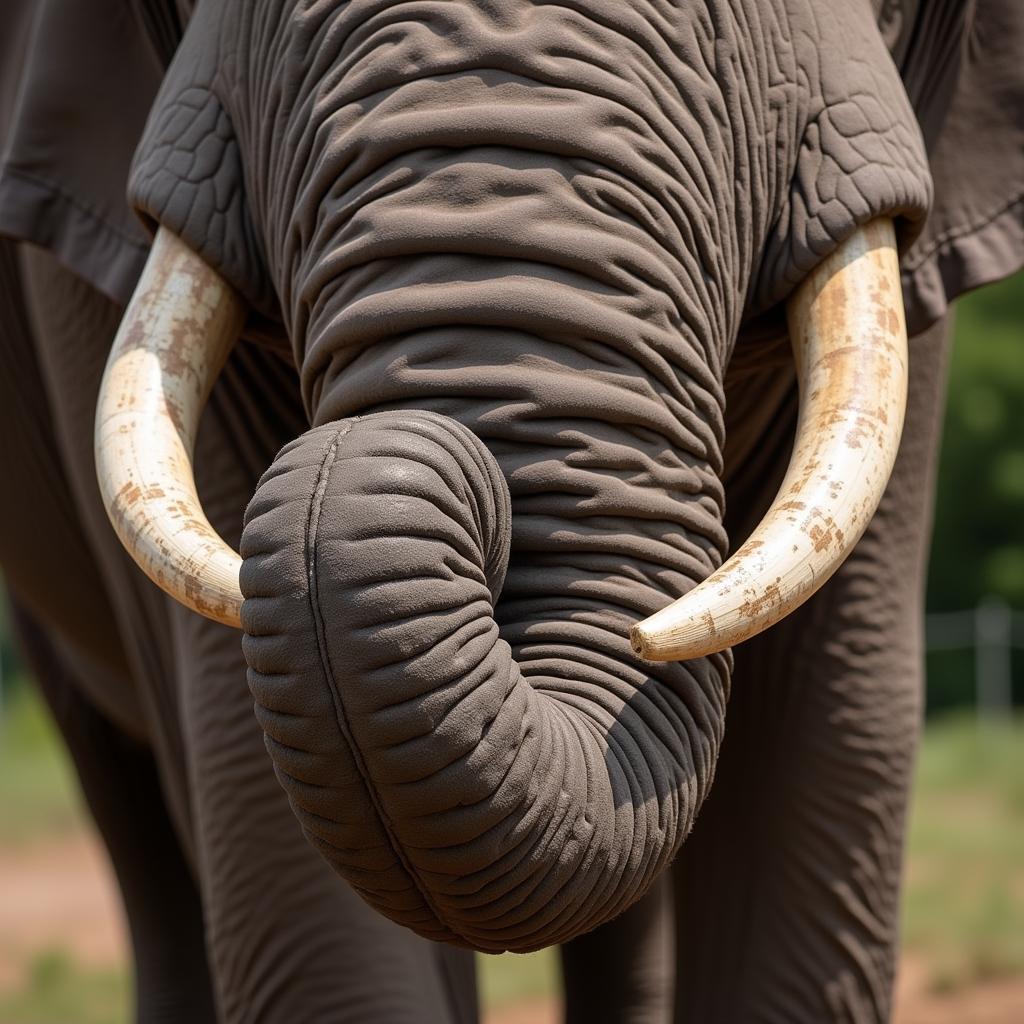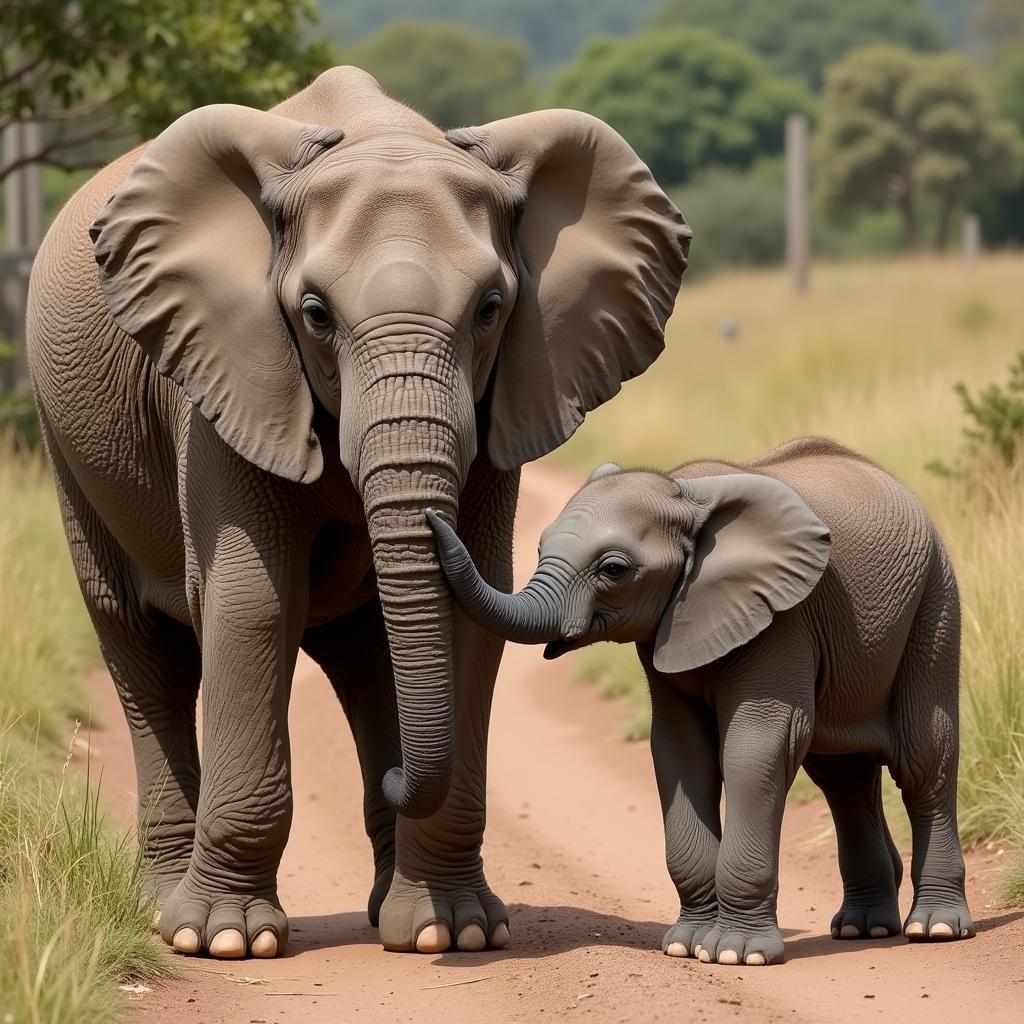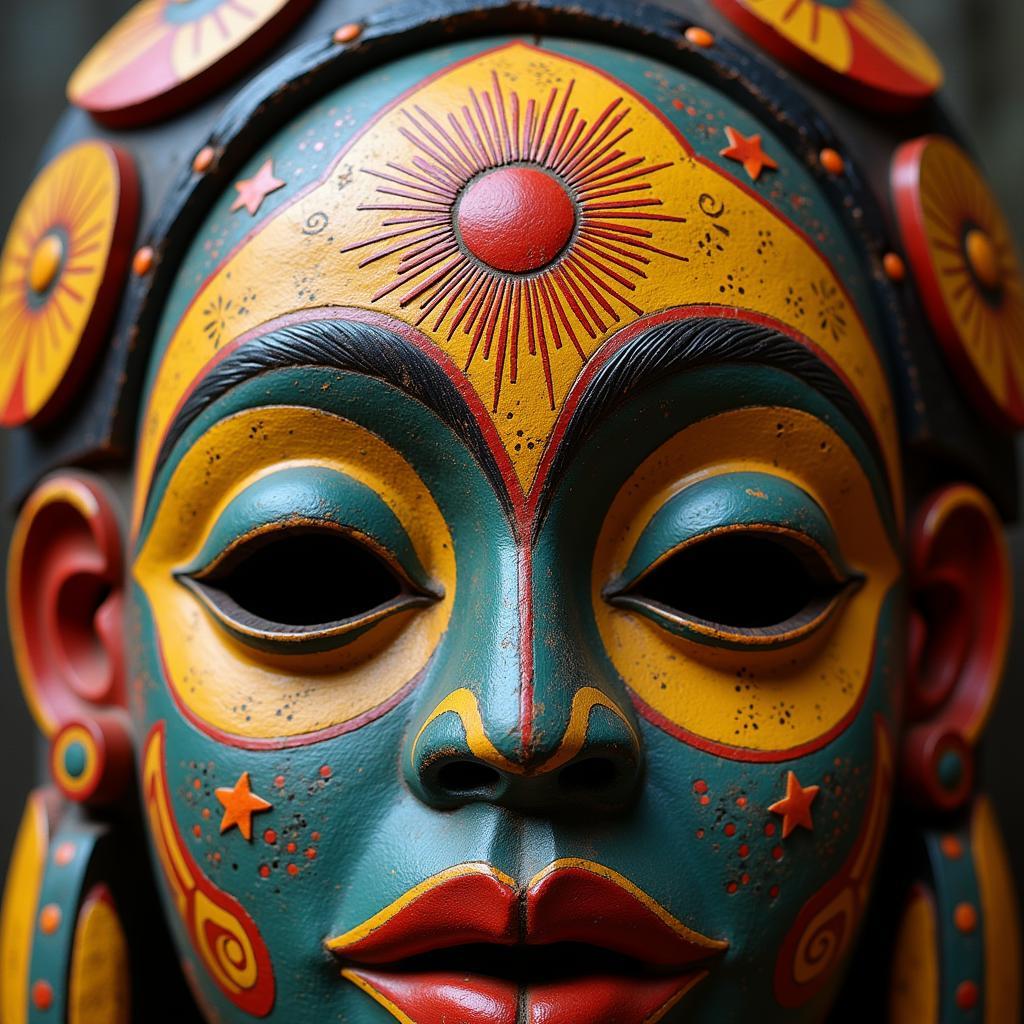African Elephant Nose Images: A Trunk Full of Wonders
The African elephant nose, more accurately called a trunk, is a remarkable example of evolutionary adaptation. From its sheer size and strength to its incredible dexterity and sensitivity, the trunk is crucial to the elephant’s survival. Searching for “African Elephant Nose Images” will reveal the diverse ways elephants use this remarkable appendage, from picking up a single blade of grass to showering themselves with water. Let’s delve into the fascinating world of the African elephant trunk.
The Anatomy of an African Elephant’s Trunk
The trunk is essentially a fusion of the nose and upper lip, forming a long, muscular, and highly flexible structure. It contains no bones but is comprised of an astonishing network of around 40,000 muscles, allowing for a surprising range of movement. This muscular structure enables the elephant to perform tasks requiring both immense power and delicate precision. Imagine lifting heavy logs and then gently caressing a newborn calf – the trunk does it all. The trunk also has two finger-like appendages at the tip, which are used for manipulating small objects. It’s truly an evolutionary marvel.
Did you know an elephant can suck up to eight liters of water into its trunk at a time? This water can then be used for drinking, bathing, or even playful spraying. This unique ability is essential for surviving in the harsh African climates.
 African Elephant Trunk Close Up
African Elephant Trunk Close Up
The African elephant differs from its Asian cousin in several ways, including the shape of its ears and the number of “fingers” on its trunk. While the Asian elephant typically has one “finger” on the upper side of its trunk tip, the African elephant has two, allowing for even greater dexterity. These differences, although subtle, highlight the unique adaptations of each species to their respective environments. For instance, see drawings of various African animals, including the elephant, to further understand the anatomical differences: african animals drawings easy.
Why Do African Elephants Have Such Unique Trunks?
What is the evolutionary purpose of such a specialized nose? The trunk serves multiple vital functions for the African elephant, contributing significantly to its survival in the diverse African landscape. From foraging for food and water to social interaction and defense, the trunk is an indispensable tool.
Functions of the Trunk
- Breathing: Of course, the most basic function is breathing. The trunk acts as a long, flexible airway.
- Drinking: As mentioned earlier, the trunk can hold a significant amount of water, crucial for hydration in arid environments.
- Eating: The trunk is essential for gathering food, from plucking leaves from high branches to digging up roots.
- Sensing: The trunk is incredibly sensitive to smell and touch, allowing elephants to detect food, predators, and even communicate with other elephants.
- Social Interaction: Elephants use their trunks for greetings, caressing their young, and even for playful sparring.
- Defense: While primarily used for peaceful purposes, the trunk can be a powerful weapon against predators when necessary.
Looking at the face of an African elephant, including its prominent trunk, gives you a sense of its intelligence and emotional depth. See more african elephant face. Dr. Anja Kioko, a renowned elephant expert, states, “The trunk is an extension of the elephant’s brain, allowing them to interact with their world in a way no other animal can.”
The Importance of Protecting African Elephants
Sadly, African elephants face numerous threats, including habitat loss and poaching for their ivory tusks. Protecting these magnificent creatures and their unique adaptations, like the incredible trunk, is crucial for maintaining the biodiversity of African ecosystems. Conservation efforts are essential to ensure that future generations can continue to marvel at these gentle giants and their amazing noses.
 African Elephant Calf and Mother Trunk Interaction
African Elephant Calf and Mother Trunk Interaction
Professor Jabari Okello, an expert in African wildlife conservation, emphasizes, “Protecting elephants is not just about saving a species; it’s about safeguarding the intricate web of life that depends on them within the African ecosystem.” Understanding the multifaceted role of the trunk helps us appreciate the complexity and importance of these creatures. Want to create a tangible representation of this majestic creature? Check out resources on making african animal masks to make.
Conclusion
The African elephant’s trunk, much more than just a nose, is a remarkable adaptation that exemplifies the power of evolution. From “african elephant nose images,” we can learn about the intricate details of this essential appendage and its diverse roles in the elephant’s life. By understanding and appreciating the unique features of the African elephant, we can contribute to the efforts to protect these magnificent creatures and their vital role in the African ecosystem. You can see more on the impressive size of the elephant at african elephant full size front view and focus on its unique head at african elephant head.
FAQ
- How many muscles are in an elephant’s trunk? Around 40,000.
- What is the difference between an African and Asian elephant’s trunk? African elephants have two “fingers” at the tip, while Asian elephants typically have one.
- What are the main functions of an elephant’s trunk? Breathing, drinking, eating, sensing, social interaction, and defense.
- Why are African elephants endangered? Habitat loss and poaching.
- How can I help protect African elephants? Support conservation organizations and spread awareness.
- What is the scientific name for the African elephant? Loxodonta africana.
- How much water can an elephant’s trunk hold? Up to eight liters.
Common Scenarios and Questions
- Scenario: You see a photo of an elephant using its trunk to pick up a small object. Question: How can such a large and powerful appendage be so precise?
- Scenario: You are watching a documentary about elephants communicating. Question: How do elephants use their trunks for communication?
- Scenario: You are researching the threats to African elephants. Question: How does poaching affect elephant populations?
Further Exploration
- Learn more about other African wildlife.
- Explore the different types of elephant communication.
- Research the impact of climate change on African elephant habitats.
When you need support, please contact us at Phone: +255768904061, Email: kaka.mag@gmail.com, or visit us at Mbarali DC Mawindi, Kangaga, Tanzania. We have a 24/7 customer service team.



